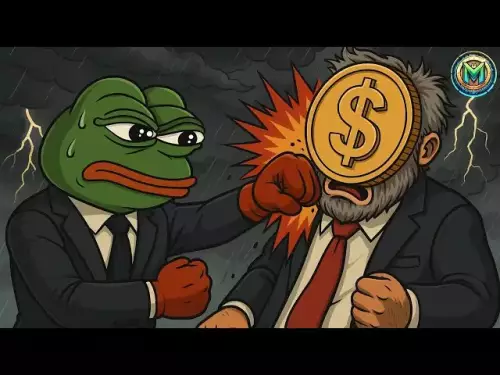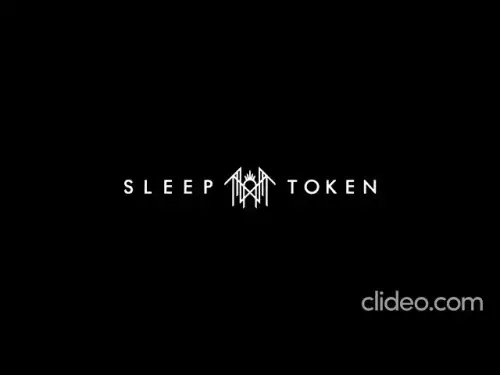-
 Bitcoin
Bitcoin $113200
1.54% -
 Ethereum
Ethereum $4368
1.43% -
 XRP
XRP $3.022
4.23% -
 Tether USDt
Tether USDt $0.0000
-0.01% -
 BNB
BNB $883.5
0.92% -
 Solana
Solana $219.5
5.29% -
 USDC
USDC $0.9997
-0.02% -
 Dogecoin
Dogecoin $0.2411
3.66% -
 Cardano
Cardano $0.8908
5.48% -
 TRON
TRON $0.3349
0.94% -
 Hyperliquid
Hyperliquid $54.50
8.93% -
 Chainlink
Chainlink $23.73
5.54% -
 Ethena USDe
Ethena USDe $1.001
-0.01% -
 Sui
Sui $3.602
5.47% -
 Stellar
Stellar $0.3861
5.90% -
 Bitcoin Cash
Bitcoin Cash $585.1
-1.13% -
 Avalanche
Avalanche $26.09
4.37% -
 Hedera
Hedera $0.2325
5.06% -
 UNUS SED LEO
UNUS SED LEO $9.549
-0.23% -
 Litecoin
Litecoin $114.2
1.13% -
 Cronos
Cronos $0.2502
-2.95% -
 Toncoin
Toncoin $3.134
1.24% -
 Shiba Inu
Shiba Inu $0.00001307
4.10% -
 Polkadot
Polkadot $4.148
3.50% -
 Uniswap
Uniswap $9.759
3.47% -
 Ethena
Ethena $0.8495
11.24% -
 World Liberty Financial
World Liberty Financial $0.2188
3.76% -
 Dai
Dai $0.9997
-0.03% -
 Monero
Monero $271.7
0.21% -
 Aave
Aave $309.2
2.95%
How can I determine the market direction after a doji candlestick pattern appears?
A doji candle in crypto signals market indecision, often hinting at reversals when confirmed by volume, RSI, and alignment with key support/resistance levels.
Sep 09, 2025 at 05:37 am
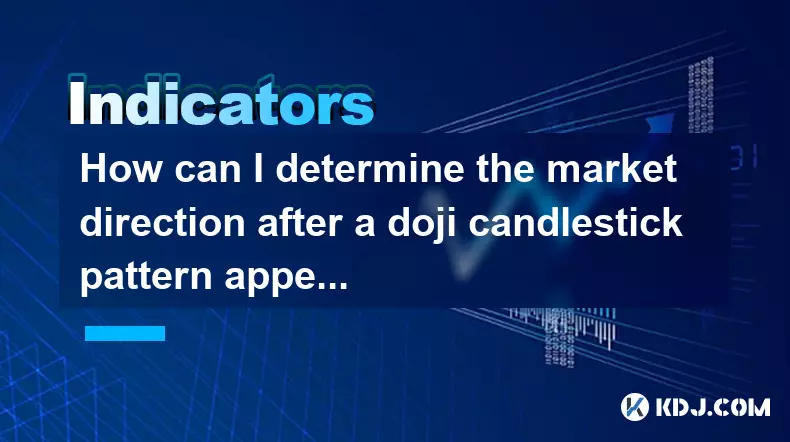
Understanding the Doji Candlestick in Crypto Markets
1. The doji candlestick is a critical formation that signals indecision between buyers and sellers. In the volatile environment of cryptocurrency trading, this pattern often emerges when market momentum stalls. It appears as a candle with a very small body, where the opening and closing prices are nearly identical, regardless of the wicks’ length.
2. Traders should not interpret the doji in isolation. Context matters significantly—its placement within a trend, volume during its formation, and surrounding price action determine its reliability. A doji at the top of an extended bullish rally may suggest exhaustion, while one in a downtrend could indicate potential stabilization.
3. Different types of dojis carry distinct implications. The standard doji, long-legged doji, dragonfly doji, and gravestone doji each convey unique messages based on wick structure. For instance, a dragonfly doji with a long lower wick suggests strong rejection of lower prices, often seen as a bullish signal in oversold conditions.
4. Volume analysis during the doji’s formation adds depth to interpretation. Low volume might reflect apathy, reducing the signal's strength. Conversely, high volume accompanying a doji increases its significance, suggesting substantial participation during the indecision phase.
5. Confirmation is essential. A doji alone does not dictate market direction. The following candle must close decisively above or below the doji’s range to validate a reversal or continuation. Waiting for this confirmation reduces false signals, especially in markets prone to whipsaws like Bitcoin or altcoins.
Key Indicators to Confirm Post-Doji Market Movement
1. Moving averages can help assess whether the market retains directional bias. If price remains above the 50-period or 200-period moving average after a doji, the uptrend may still be intact despite temporary hesitation.
2. Relative Strength Index (RSI) readings around the time of the doji offer insight into overbought or oversold conditions. A doji forming when RSI exceeds 70 may hint at a bearish reversal, particularly if followed by a drop in RSI and price.
3. On-balance volume (OBV) trends reveal whether accumulation or distribution is occurring behind the scenes. A flat or declining OBV during a doji suggests weakening interest, increasing the likelihood of a pullback.
4. Bollinger Bands can highlight volatility contraction around the doji. When bands tighten and price forms a doji near the upper or lower boundary, a breakout in either direction becomes more probable once volatility expands again.
5. Support and resistance levels intersecting with the doji enhance its predictive value. A doji forming precisely at a historical resistance zone carries more weight than one appearing in open space without confluence.
Analyzing Multi-Timeframe Context After a Doji
1. Higher timeframe alignment strengthens the validity of a doji signal. For example, a daily chart doji aligning with a weekly resistance level increases the probability of a reversal, especially if lower timeframes show loss of upward momentum.
2. Lower timeframe breakdowns immediately after the doji can expose short-term sentiment. Watching the 4-hour or 1-hour charts for failed breakout attempts helps traders anticipate whether consolidation will lead to resumption or reversal.
3. Fibonacci retracement levels overlapping with the doji provide additional technical confluence. A doji forming at the 61.8% retracement of a prior move often acts as a decision point for institutional and algorithmic traders.
4. Order book data from major exchanges like Binance or Bybit complements the doji analysis. Thick sell walls above the current price during a bullish doji suggest limited upside potential, even if the pattern appears constructive.
5. Funding rates in perpetual futures markets reflect trader positioning. Elevated long funding rates coinciding with a doji in an uptrend warn of overcrowded bulls, increasing the risk of a liquidation cascade upon any negative catalyst.
Frequently Asked Questions
What does a doji mean in a sideways crypto market? In a ranging market, a doji typically reinforces the existing consolidation. It reflects ongoing balance between supply and demand, indicating that neither bulls nor bears are gaining control. Traders often use such instances to refine entry points near support or resistance zones rather than anticipating breakout directions.
Can a doji precede a strong breakout? Yes, a doji can act as a pause before a significant move. Especially in low-volatility periods, the doji represents compression. When followed by a high-volume candle closing beyond the doji’s range, it confirms breakout momentum. This scenario is common before major news events or macroeconomic announcements affecting the crypto sector.
Is the doji more reliable in Bitcoin or altcoins? The doji tends to be more reliable in Bitcoin due to higher liquidity and less susceptibility to manipulation. Altcoins, particularly low-cap ones, frequently exhibit fake patterns due to wash trading and pump-and-dump schemes. Therefore, doji signals in altcoins require stricter confirmation criteria and volume scrutiny.
How long should I wait for confirmation after a doji? Ideally, traders should wait for the next full candle to close beyond the doji’s high or low. In fast-moving crypto markets, this could take four hours on a 4-hour chart or one day on a daily chart. Patience prevents premature entries, which are especially dangerous in leveraged trading environments.
Disclaimer:info@kdj.com
The information provided is not trading advice. kdj.com does not assume any responsibility for any investments made based on the information provided in this article. Cryptocurrencies are highly volatile and it is highly recommended that you invest with caution after thorough research!
If you believe that the content used on this website infringes your copyright, please contact us immediately (info@kdj.com) and we will delete it promptly.
- Aethir Price Check: Smart Money Bails, Correction Ahead?
- 2025-09-09 16:25:13
- Canary ETF, Staked SEI, and SEC Filings: A New York Minute on Crypto's Next Big Thing
- 2025-09-09 16:45:16
- Bitcoin Price, Rollblock, and the 30x Growth Potential: What's the Buzz?
- 2025-09-09 17:05:15
- Nasdaq and Tokenized Securities: Trading's Next Frontier
- 2025-09-09 16:45:16
- Tom Lee's Bold Bitcoin Prediction: $200,000 by 2025?
- 2025-09-09 16:25:13
- USDH Stablecoin: Sky's Bold Move for DeFi Dominance with 4.85% Yield
- 2025-09-09 16:50:12
Related knowledge
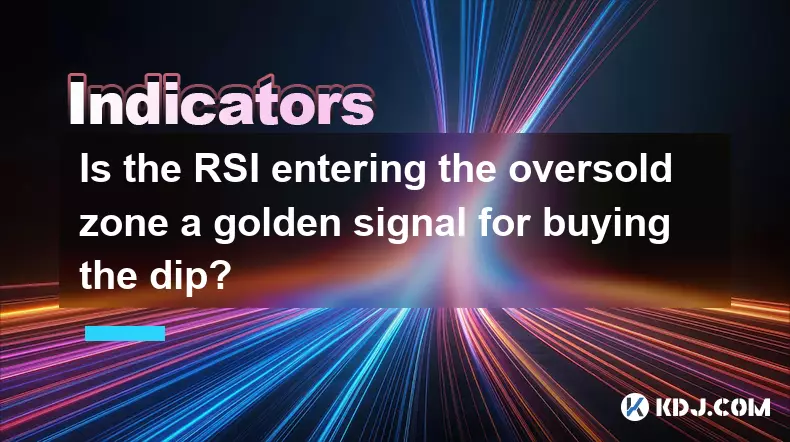
Is the RSI entering the oversold zone a golden signal for buying the dip?
Sep 09,2025 at 02:55pm
Understanding the RSI and Its Role in Crypto Trading1. The Relative Strength Index (RSI) is a momentum oscillator widely used in the cryptocurrency ma...
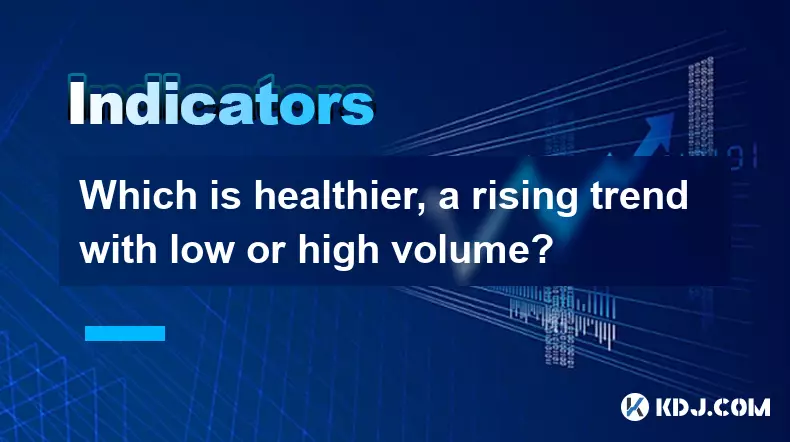
Which is healthier, a rising trend with low or high volume?
Sep 09,2025 at 04:00pm
Understanding Volume in Market Trends1. Volume serves as a critical indicator when analyzing the strength of a rising trend in cryptocurrency markets....
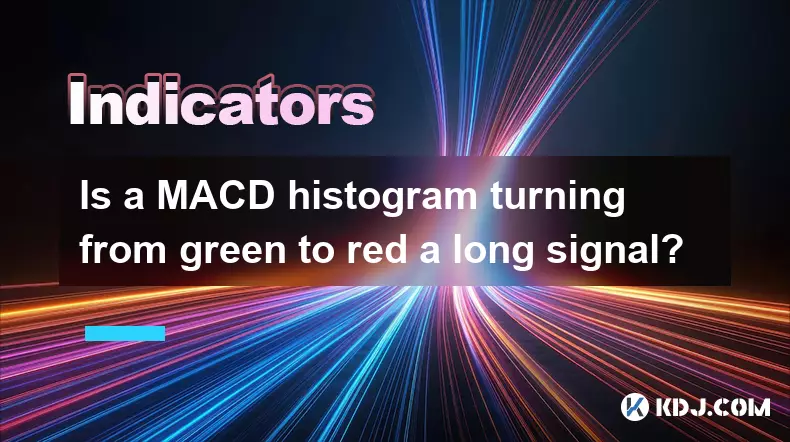
Is a MACD histogram turning from green to red a long signal?
Sep 09,2025 at 01:54pm
Understanding the MACD Histogram in Crypto Trading1. The MACD (Moving Average Convergence Divergence) histogram is a visual representation of the diff...
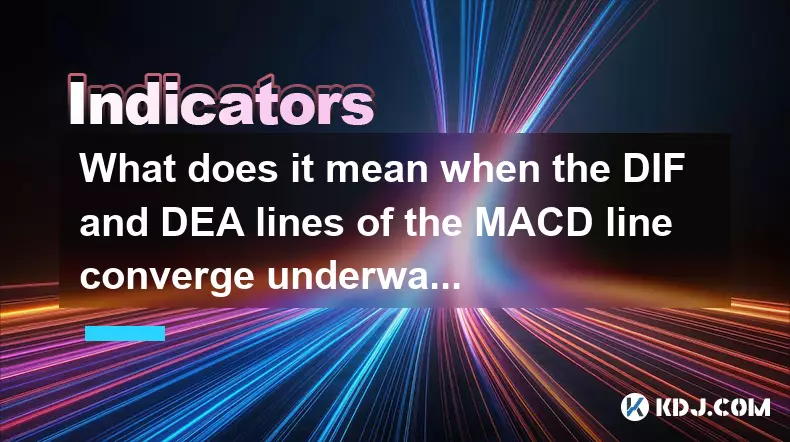
What does it mean when the DIF and DEA lines of the MACD line converge underwater?
Sep 09,2025 at 07:55am
Understanding MACD Components in Bearish Territory1. The MACD indicator consists of three elements: the DIF (Difference), DEA (Signal line), and the M...
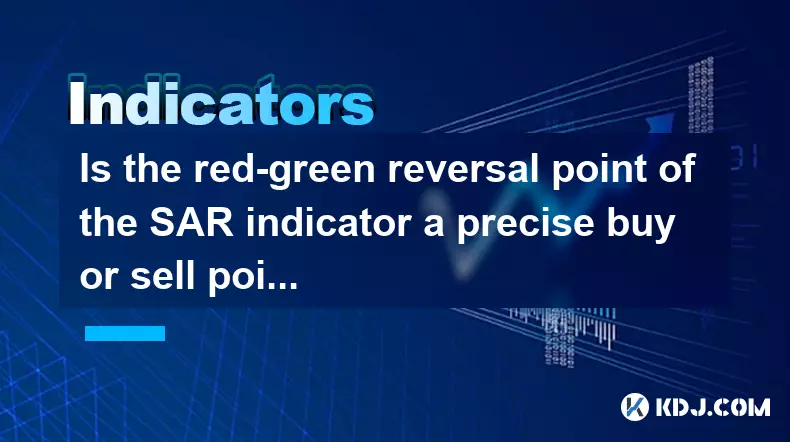
Is the red-green reversal point of the SAR indicator a precise buy or sell point?
Sep 09,2025 at 11:18am
Understanding the SAR Indicator in Cryptocurrency TradingThe SAR (Stop and Reverse) indicator, developed by J. Welles Wilder Jr., is a popular tool us...

How can I determine the market direction after a doji candlestick pattern appears?
Sep 09,2025 at 05:37am
Understanding the Doji Candlestick in Crypto Markets1. The doji candlestick is a critical formation that signals indecision between buyers and sellers...

Is the RSI entering the oversold zone a golden signal for buying the dip?
Sep 09,2025 at 02:55pm
Understanding the RSI and Its Role in Crypto Trading1. The Relative Strength Index (RSI) is a momentum oscillator widely used in the cryptocurrency ma...

Which is healthier, a rising trend with low or high volume?
Sep 09,2025 at 04:00pm
Understanding Volume in Market Trends1. Volume serves as a critical indicator when analyzing the strength of a rising trend in cryptocurrency markets....

Is a MACD histogram turning from green to red a long signal?
Sep 09,2025 at 01:54pm
Understanding the MACD Histogram in Crypto Trading1. The MACD (Moving Average Convergence Divergence) histogram is a visual representation of the diff...

What does it mean when the DIF and DEA lines of the MACD line converge underwater?
Sep 09,2025 at 07:55am
Understanding MACD Components in Bearish Territory1. The MACD indicator consists of three elements: the DIF (Difference), DEA (Signal line), and the M...

Is the red-green reversal point of the SAR indicator a precise buy or sell point?
Sep 09,2025 at 11:18am
Understanding the SAR Indicator in Cryptocurrency TradingThe SAR (Stop and Reverse) indicator, developed by J. Welles Wilder Jr., is a popular tool us...

How can I determine the market direction after a doji candlestick pattern appears?
Sep 09,2025 at 05:37am
Understanding the Doji Candlestick in Crypto Markets1. The doji candlestick is a critical formation that signals indecision between buyers and sellers...
See all articles
























